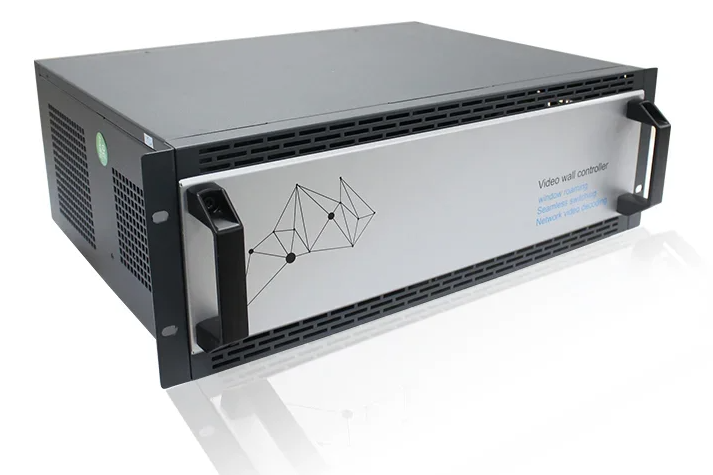Smart servo motors are critical components in modern automation systems, delivering precise motion control, high efficiency, and reliability across a wide range of industries. Shenzhen Richbetter Technology Co., Ltd. is a leading high-tech enterprise specializing in precision drive systems. Our products include inner and outer rotor brushless motors, frameless torque motors, linear motors, voice coil motors, and high-integration modular products, widely used in 3C electronics, semiconductors, robotics, medical equipment, aerospace, new energy, and military applications.
Proper maintenance of smart servo motors ensures optimal performance, reduces downtime, and extends their operational lifespan. This comprehensive guide provides actionable tips, best practices, troubleshooting strategies, and real-world applications for maintaining Richbetter servo motors in industrial automation systems.
1. Regular Inspection and Cleaning
Importance of Regular Inspections
Over time, dust, debris, and industrial residues can accumulate around servo motors, impacting cooling efficiency and electrical performance. Regular inspections prevent overheating, reduce wear, and improve system reliability.
Cleaning Recommendations
-
Use compressed air or soft brushes to remove dust and debris.
-
Avoid harsh solvents that may damage insulation or sensitive components.
-
Inspect ventilation openings for blockages to maintain proper airflow.
-
Check connectors, cables, and encoders for corrosion or loose connections.
2. Lubrication and Bearing Maintenance
Role of Bearings in Performance
Bearings are critical for smooth rotation and torque transmission. Lack of proper lubrication can lead to overheating, noise, and early motor failure.
Lubrication Best Practices
-
Follow manufacturer-recommended lubrication intervals.
-
Inspect bearings for wear, unusual noise, or vibrations.
-
Replace worn bearings promptly to avoid cascading damage.
-
For high-speed applications, consider advanced grease designed for servo motors.
3. Temperature and Environmental Control
Maintaining Optimal Conditions
Servo motors perform best within rated temperature ranges. High temperatures can degrade insulation and reduce torque output.
Environmental Best Practices
-
Keep ambient temperature within the motor’s rated limits.
-
Protect motors from direct sunlight, moisture, and corrosive chemicals.
-
Implement ventilation or active cooling for enclosed systems.
4. Electrical and Signal Checks
Ensuring Reliable Electrical Connections
Servo motors rely on precise electrical signals for accurate motion. Voltage fluctuations, loose connections, or EMI (electromagnetic interference) can compromise performance.
Electrical Maintenance Steps
-
Inspect power supply lines and connectors regularly.
-
Ensure proper grounding to reduce EMI interference.
-
Verify encoder signals and recalibrate if necessary.
5. Firmware, Software, and Driver Updates
Why Updates Matter
Richbetter smart servo motors are often paired with sophisticated drivers and controllers. Firmware updates enhance performance, reduce errors, and improve system stability.
Update Best Practices
-
Check for firmware or driver updates from Richbetter regularly.
-
Test new firmware on a sample system before full deployment.
-
Follow manufacturer instructions carefully to avoid configuration issues.
6. Vibration and Mechanical Stress Management
Impact on Motor Lifespan
Excessive vibration or mechanical shocks can reduce bearing life, misalign rotor components, and affect torque accuracy.
Prevention Techniques
-
Install vibration-damping mounts in robotic arms or machinery.
-
Ensure precise shaft alignment to prevent stress on couplings.
-
Avoid repeated rapid start/stop cycles exceeding the motor’s rated specifications.
7. Calibration and Performance Verification
Maintaining Precision
Over time, wear and environmental factors may cause slight deviations in motor positioning. Regular calibration preserves accuracy.
Calibration Steps
-
Perform position and speed tests routinely.
-
Compare torque and rotation accuracy with baseline measurements.
-
Adjust PID parameters or encoder offsets as required.
8. Technical Parameters and Specifications of Richbetter Smart Servo Motors
| Parameter | Typical Value | Notes |
|---|---|---|
| Motor Type | Inner/Outer Rotor Brushless | Customized options available |
| Power Range | 50W – 15kW | Based on application and load |
| Torque Range | 0.1Nm – 150Nm | Frameless torque motors included |
| Speed Range | 100 – 12,000 rpm | High-speed hollow cup motor capability |
| Temperature Range | -20°C – 80°C | Ensure cooling in high-load environments |
| Feedback | Encoder/Resolver | High-precision control |
| Integration | Modular options | Easy integration with automation systems |
9. Applications and Case Studies
Robotics
Richbetter servo motors power industrial robots and collaborative robots, providing precise control for welding, assembly, and inspection.
3C Electronics and Semiconductors
Automated assembly and testing lines rely on high-precision motors to maintain consistent product quality.
Medical Equipment
Surgical robots, diagnostic machines, and laboratory automation use Richbetter motors for smooth, accurate operation.
Aerospace and Military
Critical applications demand high reliability, vibration resistance, and precision torque control.
New Energy and Manufacturing
Servo motors drive CNC machines, linear transport systems, and automated production lines efficiently.
10. Common Issues and Troubleshooting
| Issue | Possible Cause | Recommended Action |
|---|---|---|
| Overheating | Overload, poor ventilation | Reduce load, improve airflow, check cooling system |
| Unstable motion | Encoder error, signal noise | Recalibrate encoder, check wiring, update firmware |
| Noise or vibration | Bearing wear, misalignment | Inspect bearings, realign shaft, replace worn components |
| Reduced torque | Power supply issues | Verify voltage, inspect drive and connections |
11. FAQ
Q1: How often should Richbetter servo motors be inspected?
A1: At least once every 3–6 months, depending on operating conditions. High-load or high-speed applications may require more frequent checks.
Q2: Can firmware updates improve motor performance?
A2: Yes, updates can optimize motion control algorithms, enhance stability, and reduce error rates.
Q3: What type of lubrication is recommended?
A3: Use manufacturer-specified grease designed for high-speed servo motors, following recommended intervals.
Q4: How can vibration issues be minimized?
A4: Install vibration-damping mounts, ensure proper alignment, and avoid rapid load changes.
12. Summary
Proper maintenance of Richbetter smart servo motors is essential for maximizing lifespan, ensuring high precision, and reducing downtime. Following best practices for inspection, lubrication, environmental control, electrical checks, software updates, vibration management, and calibration ensures reliable performance in industries ranging from robotics and medical equipment to aerospace and precision manufacturing.
By implementing these strategies, engineers and technicians can optimize their automation systems, maintain productivity, and protect their investment in high-performance Richbetter smart servo motors.
www.rbtmotion.com
Shenzhen Richbetter Technology Co.,Ltd.

